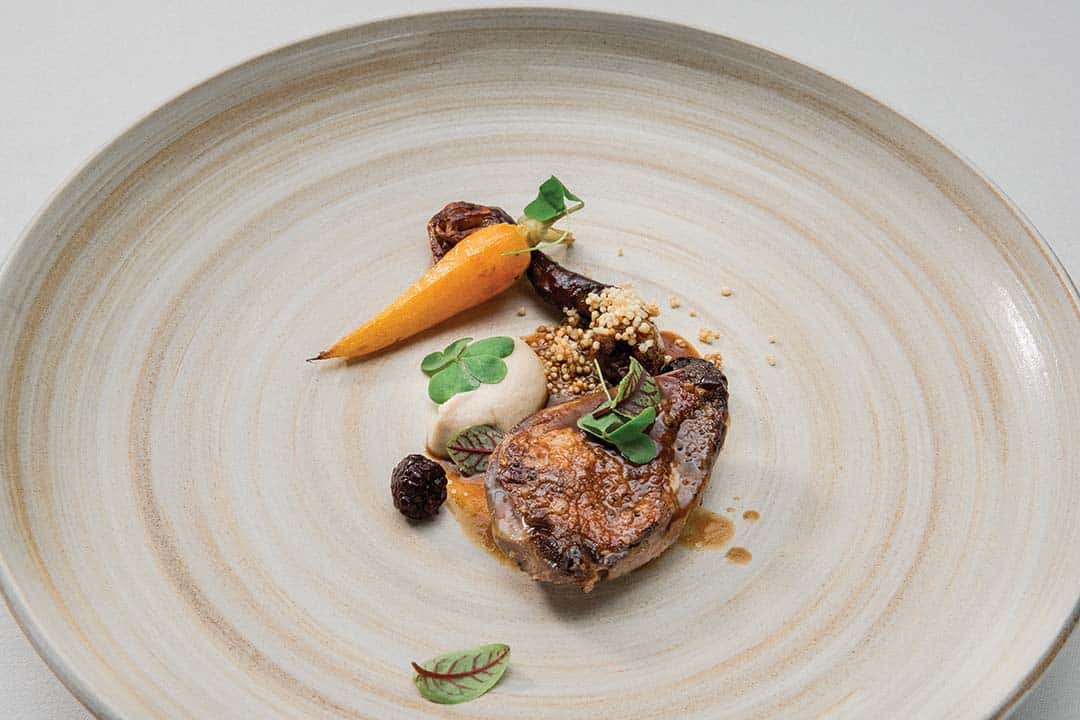“Yes, Chef!”
This scene of The Menu starts with the sound of a gentle bell as the room goes silent. A loud clap echoes through the room as if the very earth had shaken. Everyone stands at attention, awaiting Chef’s words. He begins a monologue about the intricacies of the dish specially prepared for the elements around the characters. He asks you not to eat, but rather to be mindful and savour each moment, each taste, and each sensation to the fullest.
This is the world of The Menu, an exciting thriller movie that follows a young couple who visit a remote restaurant that is far from your average fine dining establishment. The structure of the movie follows the formatting of a literal menu as it takes you on this incredible experience. It blends social commentary on the service industry and the death of artistry.
I highly suggest watching it — especially as an arts kid myself — but beyond the quality of the movie, it got me thinking about the social status that food can possess. How can simple meals become extravagant experiences that make you wonder if you’re even eating anymore?
Fine dining
When you look at an average meal, you can pretty much find an equivalent of it that caters to a completely different tax bracket. One of the most common things that elevate meals is edible gold. Industry Kitchen in New York serves a ‘24k pizza’ and as the name suggests, it is covered in edible gold leaves worth hundreds of dollars. It even has Ossetra caviar, foie gras, imported white stilton cheese, and truffles. If you’ve ever been interested in eating literal gold, this pizza will set you back USD 2,700.
The tradition of edible gold started with ancient Egyptians. Gold was eaten as a sacred food because of its connection to the gods they worshipped. It was even loved by European lords in the middle ages.
The historical context doesn’t give eating gold any value, especially since gold has no nutritional value and will simply just pass through your body. There’s no reason for that level of extravagance other than the status you can gain from being able to say, “Hey, I ate a gold pizza.”
Abstract designs
The notable difference between these types of dishes and your average corner street joint comes from how the food is presented. Eventually, there comes a point where the food no longer looks edible.
The Fortress Resort and Spa in Galle, Sri Lanka is known for making the most expensive dessert in the world. The ‘Fortress Stilt Fisherman Indulgence’ is renowned for its intricate handcrafted chocolate fisherman. It is served alongside a mango and pomegranate compote and, you guessed it, a gold leaf. This bad boy will set you back USD 14,500. While the dish looks stunning, I would rather buy a Honda Civic.
This dessert is beyond food — it genuinely looks like a sculpture. It’s handcrafted art with the high price of a valuable painting. It transcends the dining experience and really makes you wonder who would genuinely buy this. These types of products are catered to specific demographics — all they do is show off the status of eating a dish that is that luxurious.
From plate to painting
Food itself has even gone beyond simply looking like art and is occasionally considered to be art itself. Food as art has had a long history that started with Italian artist Filippo Tommaso Marinetti, who considered dishes to be art.
Nowadays, we see modern art blending with food. Lazy Mom — a collaboration between New York artists Josie Keefe and Phyllis Ma — took “Geometric Floral,” a photograph that showcases bodega flowers and foods inside a cube made of gelatin. The photograph’s driving concept is that of a “bad mother” that has jumbled food together to conceive a meal.
Rather than paying for a meal that has flamboyant ingredients, this form takes food and composes it into an art piece strictly for viewing.
Culinary arts
Food and art have an intricate history that dates back thousands of years. Not only has this history influenced different niche forms of dining, but it also influences the creation of art pieces. We see how food represents power dynamics and how it can even transform meals from basic ingredients to specialized experiences.
Rather than simply eating, these meals are designed to be enjoyed for their sensations, rather than for sustenance, which creates an odd imbalance between who can afford them and who cannot. The Menu masterfully shows the absurdity that comes with certain levels of the culinary arts. It shows how humans as social creatures love the show-off, but I think I will keep enjoying a simple cheeseburger, minus the gold.


